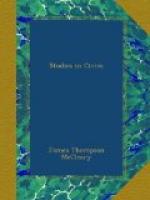5. The counting of the vote will take place, as heretofore, on the second Wednesday in February following the meeting of the electors. At one o’clock in the afternoon the senate and house of representatives meet in the hall of the house of representatives, and the president of the senate takes the chair.
“Two tellers shall be previously appointed on the part of the senate and two on the part of the house of representatives, to whom shall be handed, as they are opened by the president of the senate, all the certificates and papers purporting to be certificates of the electoral votes, which certificates and papers shall be opened, presented, and acted upon in the alphabetical order of the states, beginning with the letter A; and said tellers, having then read the same in the presence and hearing of the two houses, shall make a list of the votes as they shall appear from the said certificates; and the votes having been ascertained and counted in the manner and according to the rules in this act provided the result of the same shall be delivered to the president of the senate, who shall thereupon announce the state of the vote, which announcement shall be deemed a sufficient declaration of the persons, if any, elected president and vice-president of the United States, and, together with a list of the votes, be entered on the journals of the two houses.”
6. Upon the reading of each certificate the president of the senate asks whether there be any objections to it. Objection must be made in writing, and must “state clearly and concisely, and without argument, the ground thereof.” To entitle it to consideration, the objection must be signed by at least one senator and one representative.
When all the objections to any paper have been received and read, the senate withdraws, and the two houses proceed separately to consider them.
If from any state but one set of electors are certified, and the certification has been done as prescribed in section three, the certificate cannot be rejected. But if not properly certified, the two houses acting concurrently “may reject the vote or votes when they agree that such vote or votes have not been so regularly given by those whose appointment has been so certified.”
If more than one return has been received from any state, those votes only shall be counted which have been determined as provided in section two.
If two or more returns appear, each certified by authorities claiming to be the lawful tribunal of the state, the vote shall be counted which the two houses, acting separately, “concurrently decide is supported by the decision of such state so authorized by its laws.”
If more than one return comes in from any state, no determination such as is prescribed in section two having been made, the two houses concurrently decide which, if any, of the votes shall be counted. If in such a case the houses disagree, the votes of those electors shall be counted whose appointment shall have been certified by the executive of the state.




